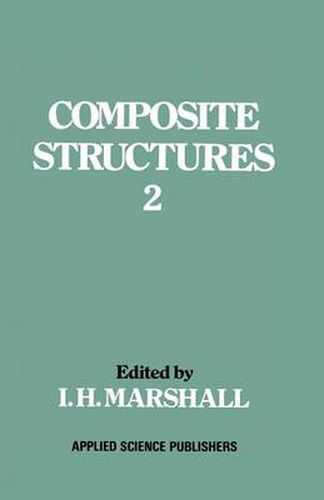Readings Newsletter
Become a Readings Member to make your shopping experience even easier.
Sign in or sign up for free!
You’re not far away from qualifying for FREE standard shipping within Australia
You’ve qualified for FREE standard shipping within Australia
The cart is loading…






This title is printed to order. This book may have been self-published. If so, we cannot guarantee the quality of the content. In the main most books will have gone through the editing process however some may not. We therefore suggest that you be aware of this before ordering this book. If in doubt check either the author or publisher’s details as we are unable to accept any returns unless they are faulty. Please contact us if you have any questions.
The papers contained herein were presented at the Second International Conference on Composite Structures (ICCS/2) held at Paisley College of Technology, Paisley, Scotland, in September 1983. The Conference was organised and sponsored by Paisley College of Technology in association with the Scottish Development Agency and the National Engineering Laboratory. It forms a natural progression from the highly successful First International Conference on Composite Structures (lCCS/l) held at Paisley in September 1981. The last few decades have seen phenomenal advances in research and of composite materials with new and exciting structural development possibilities being unearthed on an almost daily basis. Composites have been rightly heralded as space-age materials of the future. However, along with the rather specialised aerospace applications a growing awareness of the wider potential of composites is also unmistakable. The extensive composite materials research programmes of the fifties and sixties are now yielding fruit in abundance, with composites being used in virtually every area of structural engineering from transportation to pressure vessels and so on. Although significant weight savings, paramount in transportation engineering, are possible, composites have gone far beyond being simply lighter than conventional materials. They offer real structural advantages with almost unbounded potential. The ability to tailor a particular matrix material to suit prevailing environmental conditions whilst maintaining adequate reinforcement to withstand applied loading is unquestionably an attractive proposition.
$9.00 standard shipping within Australia
FREE standard shipping within Australia for orders over $100.00
Express & International shipping calculated at checkout
This title is printed to order. This book may have been self-published. If so, we cannot guarantee the quality of the content. In the main most books will have gone through the editing process however some may not. We therefore suggest that you be aware of this before ordering this book. If in doubt check either the author or publisher’s details as we are unable to accept any returns unless they are faulty. Please contact us if you have any questions.
The papers contained herein were presented at the Second International Conference on Composite Structures (ICCS/2) held at Paisley College of Technology, Paisley, Scotland, in September 1983. The Conference was organised and sponsored by Paisley College of Technology in association with the Scottish Development Agency and the National Engineering Laboratory. It forms a natural progression from the highly successful First International Conference on Composite Structures (lCCS/l) held at Paisley in September 1981. The last few decades have seen phenomenal advances in research and of composite materials with new and exciting structural development possibilities being unearthed on an almost daily basis. Composites have been rightly heralded as space-age materials of the future. However, along with the rather specialised aerospace applications a growing awareness of the wider potential of composites is also unmistakable. The extensive composite materials research programmes of the fifties and sixties are now yielding fruit in abundance, with composites being used in virtually every area of structural engineering from transportation to pressure vessels and so on. Although significant weight savings, paramount in transportation engineering, are possible, composites have gone far beyond being simply lighter than conventional materials. They offer real structural advantages with almost unbounded potential. The ability to tailor a particular matrix material to suit prevailing environmental conditions whilst maintaining adequate reinforcement to withstand applied loading is unquestionably an attractive proposition.